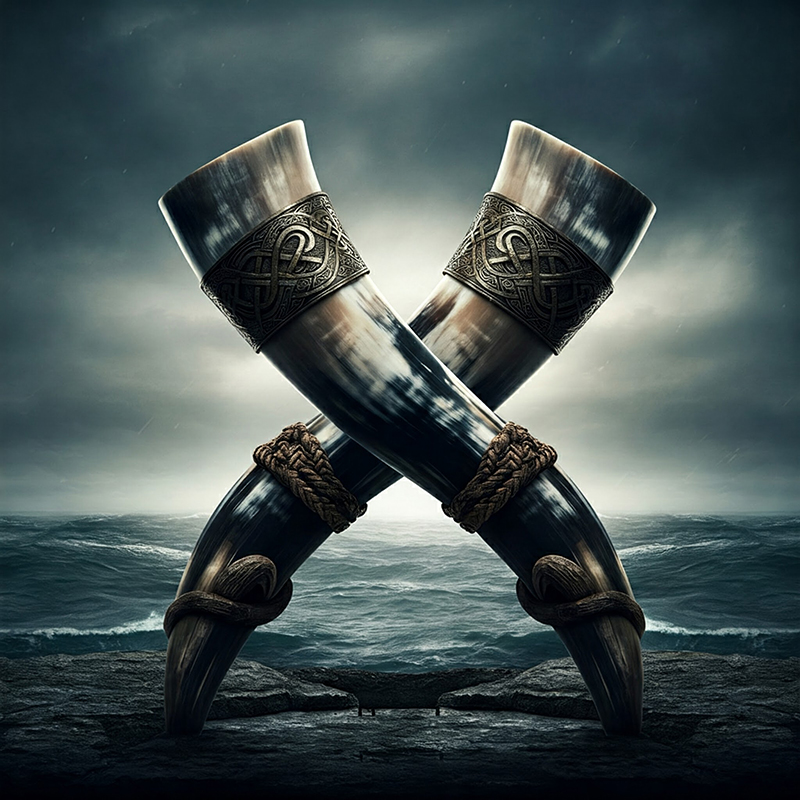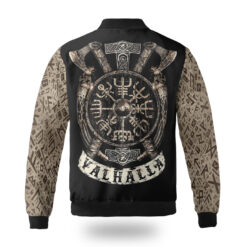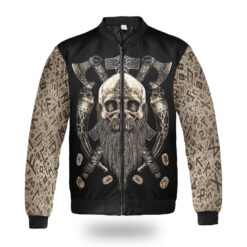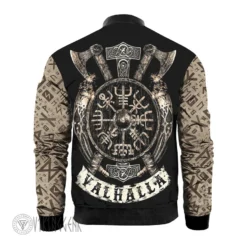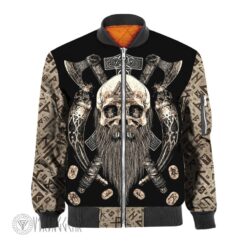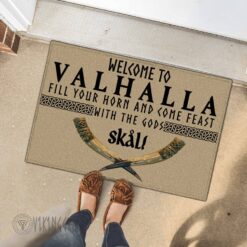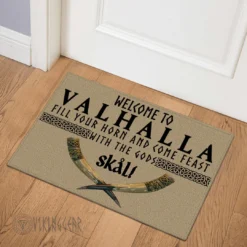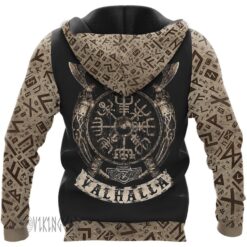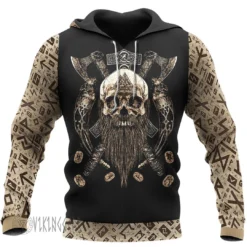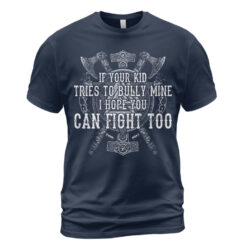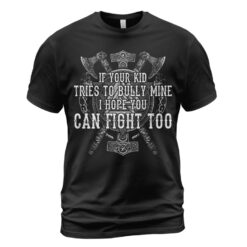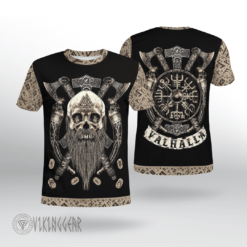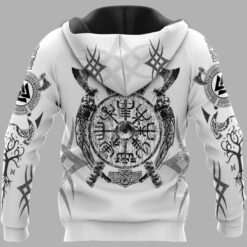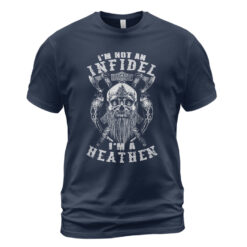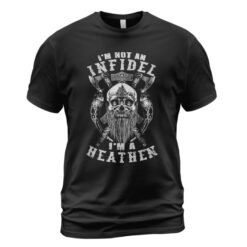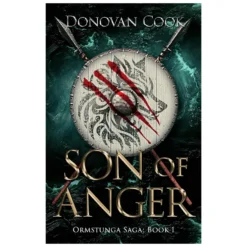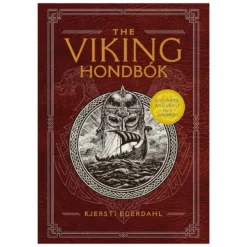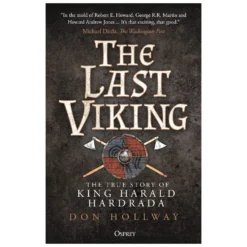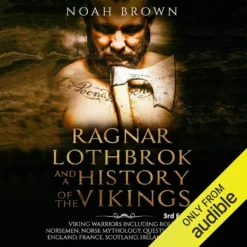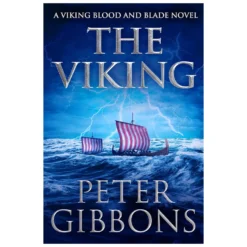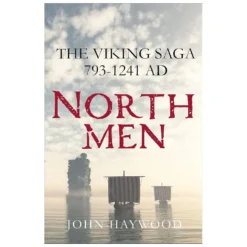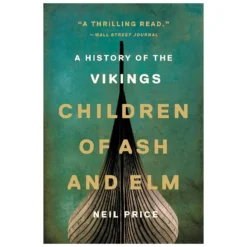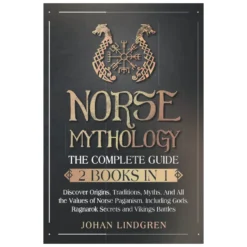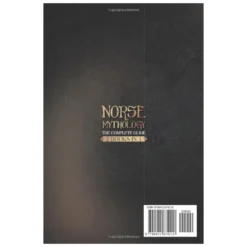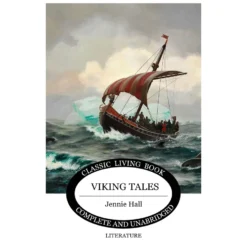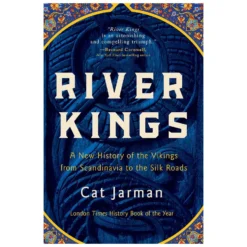Viking Blog
Viking Horn and 10 Meaningful Stories About Nordic Culture
The Viking horn, a symbol of Norse heritage, has captivated imaginations for centuries. This iconic artifact shows the Viking Age’s vibrant life, beliefs, and traditions. Its practical uses and myths reveal much about that time. Let’s explore 10 tales. They reveal why the Viking horn is a symbol of Nordic culture.
1. The Viking Horn: The Sound of Victory
A Viking longship, its carved prow slicing through the mist, approaches a rocky shore. The air hums with tension, the horizon ablaze with the crimson hues of sunset. Warriors leap ashore, boots pounding the earth. Their faces show the grit and triumph of battle.
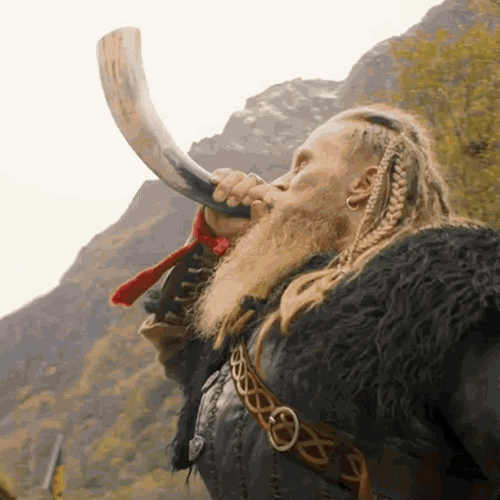
Then comes the blast of the horn—a thunderous roar that reverberates across the fjords. This is more than a victory cry; it is a primal release of battle’s fury, a rallying call to celebrate the spoils of war. In the mead halls that followed, warriors raised horns of golden mead high. They marked tales of valor and the Viking spirit.
2. The Gjallarhorn: A Call to the Gods
Not all horns were mortal tools. The Gjallarhorn, wielded by Heimdall, the gods’ guardian, transcended the earth. It wasn’t an object; it was a harbinger of cosmic upheaval.
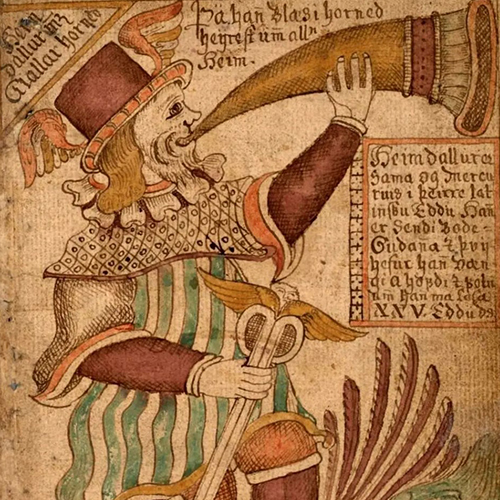
Its blast could pierce the nine realms, shaking Yggdrasil’s roots. Its call summoned the gods. The heavens trembled. Ragnarok loomed. The Gjallarhorn symbolizes vigilance, destiny, and the bond between gods and mortals.
3. A Toast to Prosperity and Fertility
The Viking horn, beyond the battlefield, symbolized plenty and life’s cycles. Imagine a feast hall alive with laughter. The tables are laden with roasted meats, fresh bread, and jugs of mead.
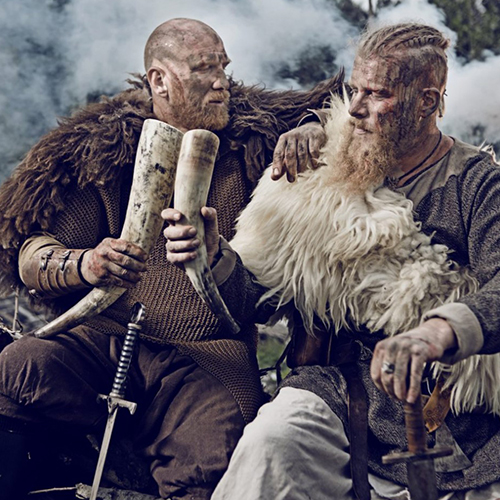
Artists carved intricate vines and mythical creatures on the horns used in such gatherings. They weren’t drinking vessels—they were prayers in disguise. Each sip celebrated the earth’s bounty and invoked blessings for the seasons to come.
4. The Viking Horn: A Tool of Unity
In the Viking Age, wild landscapes and roaring winds filled the fjords. In this time, horns became a vital means of communication.
Picture a lone sentinel perched atop a cliff, spotting an approaching threat. A single, resonant blast from his horn cuts through the biting air, calling warriors to arms. The horn serves as an ancient network. Its urgent, far-reaching tones connect communities.
5. Hospitality in the Hearth
To cross the threshold of a Viking longhouse was to step into the heart of their world. Flickering firelight cast shadows on the shield-hung walls. The scent of spiced mead mingled with roasting meat.
A horn brimming with drink was the ultimate gesture of hospitality. Accepting it was to partake in the bond of trust and kinship; to refuse was an unforgivable insult. The offering of a horn signified warmth, community, and the sacred act of sharing.
6. Artistic Expressions in Horns
For the Vikings, horns were not tools but canvases for their artistic genius. Craftsmen carved intricate patterns of interlacing knots, mythical creatures, and legendary exploits into the polished surfaces.
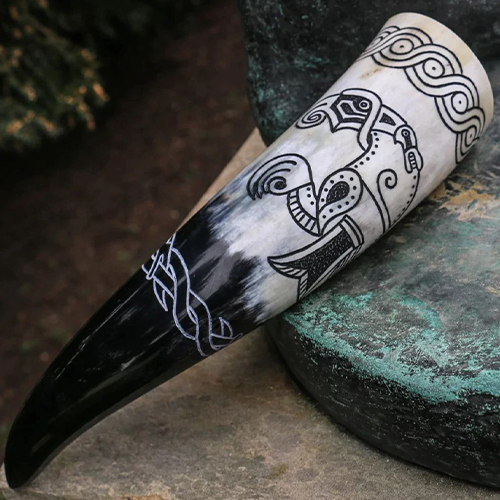
Each horn was a unique masterpiece. It told the story of its owner—a fearsome warrior, a revered chieftain, or a humble farmer. These decorated horns were as much symbols of identity as they were of artistry.
7. Rituals and Ceremonies
In Viking rituals, the horn served as a bridge to the divine. Imagine a sacred ceremony under a starlit sky. A circle of shadowy figures is chanting prayers to the gods.
They passed a horn filled with mead among themselves. Its carvings glinted in the firelight. It was a sacred conduit, not a vessel. It carried offerings to unseen forces and bound the mortal realm to the gods.
8. A Mark of Prestige
The Viking horn also carried social weight. The horn’s ornate and lavish decorations state a higher status for its owner.
Picture a chieftain. His wolf-fur cloak ripples in the wind. He raises a magnificent, jewel-encrusted horn. Its silver gleams. It isn’t a ship. It is a sign of power, wealth, and influence. It shows his status among his peers.
9. Inspiration for Modern Media
The Viking horn inspires modern stories. It shapes shows like Vikings and Game of Thrones.
Its vivid, emotional tale takes audiences to a world of stormy shores, mighty warriors, and epic adventures. The horn remains a visual shorthand for the enduring spirit of Norse culture.
10. A Tangible Link to the Past
Holding a Viking horn today, whether an old relic or a replica, is like grasping a piece of history. It whispers of voyages, fierce battles, and fireside tales. Generations have passed it down.
The horn is a timeless reminder of a people. They revered strength, celebrated artistry, and honored nature and the divine.
The Viking horn is more than a relic; it is a portal to a world of myth, might, and meaning. These 10 tales show that the horn embodies the Viking spirit. Its legacy still inspires awe and admiration today.

